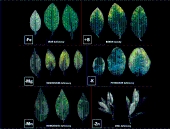








We can green the world through random acts of planting.








"Study books and observe nature; if they do not agree, throw away the books." ~ William A. Albrecht




James Freyr wrote:Interesting soil you have there. Does your soil test have a Cation Exchange Capacity (CEC) number on it or was it only Electrical Conductivity?
Also, does it list the magnesium and sulphur content?
I think you should determine if you want to grow trees that will thrive in the soil's current pH or if you want to grow trees that thrive in a slightly acidic soil. I glanced at the link Jd provided and it does appear some fruit and nut trees may do alright with the current soil pH, but it sounds like some levels of certain elements may need adjustment.
You're absolutely on the right track with wanting to plant deep rooted plants, and inoculating with mycorrhizae. Note that mycorrhizal fungi are dependent on roots to do their thing, and other bacterium (like certain strains of Bacillus for example) are not completely dependent on roots, but they do thrive well with root exudates. Jd has great advice adding straw, mulch, compost and a living legume mulch. Adding materials high in lignin like wheat straw builds humus fast with the aid of things like earthworms and a healthy population of microbes. Manures from grazing ruminants (which is basically animal composted grass), compost, straw, some hardwood mulches, and some microbial soil conditioner, and then sowing a cover crop that tolerates alkaline soil are all good things you can do to improve your soil.





"Study books and observe nature; if they do not agree, throw away the books." ~ William A. Albrecht


















Antonio Scotti wrote:What have you done in the last 10 years to try to improve it, by the way? Is your soil also somewhat saline or with high sodium content as well?




Joseph Lofthouse wrote:
... Which is saturated with limestone. Therefore, irrigation tends to undo any pH lowering applications I might make.




Walt Chase wrote: You could also add sulfur at the rate of about 10oz per 100ft sq to lower ph one number.




"Study books and observe nature; if they do not agree, throw away the books." ~ William A. Albrecht





Antonio Scotti wrote:Are you saying that if it wasn't for the type of irrigation water you have the measures you took might have been (more) successful?




Antonio Scotti wrote:
Walt Chase wrote: You could also add sulfur at the rate of about 10oz per 100ft sq to lower ph one number.
Hi Walt,
is this some kind of general rule/recipe for applying sulphur to a landscape (of the type I have) anywhere?
Also James talked about "sulphurs"...does that mean that there are different types or fomulations of sulphur to consider? You mentioned two of them iron sulphate and (plain I assume) sulphur, are there others that might be worth researching?
By the way I found articles suggesting that it is not worth trying to use pine needle for acidifying a soil: http://gardening.stackexchange.com/questions/13789/does-a-pine-needle-mulch-make-your-soil-acidic although they can be a good and cheap mulching material.
Cheers

|
Happiness is not a goal ... it's a by-product of a life well lived - Eleanor Roosevelt. Tiny ad:
A rocket mass heater is the most sustainable way to heat a conventional home
http://woodheat.net
|



